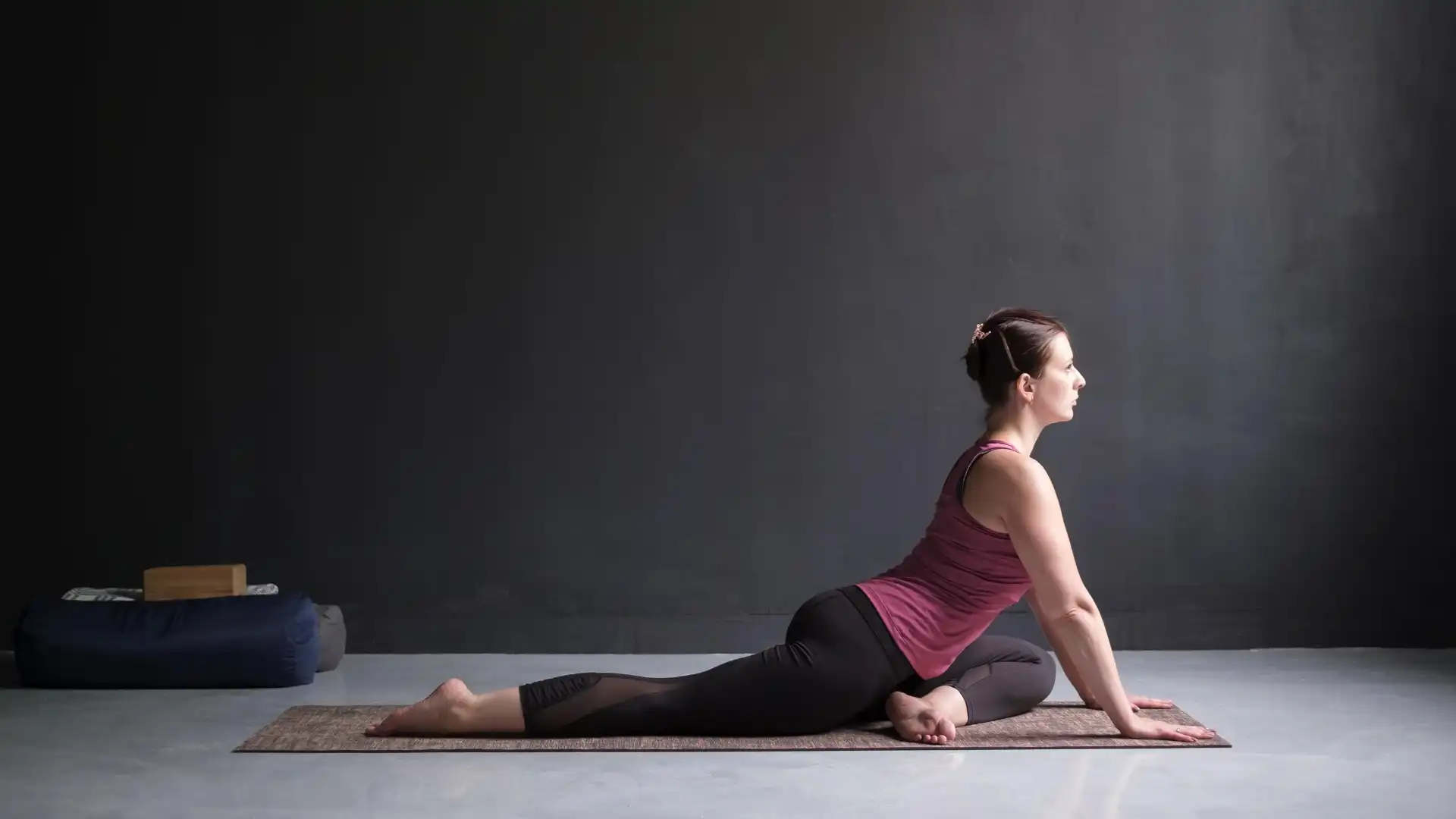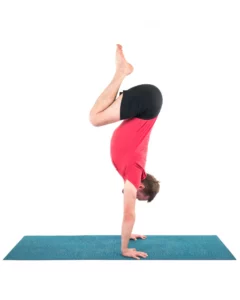How to Practice Yoga for a Healthy SI Joint: What Not to Do

Have you ever felt a pinching sensation in your pelvis a few inches below your waist? If so, you’re not alone. From my experience, and that of a couple of internationally touring yoga teachers I know, pain in the sacroiliac (SI) joint is one of the most common complaints of yoga practitioners of all experience levels.
The SI joint is the meeting place between the sacrum and the ilium. The sacrum is a triangular-shaped bone that extends off the lumbar spine and ends in the coccyx (tailbone). In other words, it’s the lowest portion of your spine. The two sides of the pelvic bones make up the ilia. Where the sacrum and ilia meet in the ilia is the SI joint.
THE SI JOINT: MOBILE STABILITY

Donna Farhi calls the SI joint a joint of “mobile stability.” This means that while it has some mobility—about 1 to 3 millimeters of movement capability—its primary function is stability. The SI joint is the hub for transmitting force from the lower to the upper body and the upper to the lower body. For a force to move through the joint smoothly, the joint must be in integrity. This means that the sacrum must be firmly seated in the ilium for maximum stability.
3 YOGA PRACTICES THAT MAY CONTRIBUTE TO SI JOINT DYSFUNCTION
What can cause the SI joint to lose integrity? Here are a few things I’ve learned over the decades of teaching yoga and experiencing my own chronic SI joint pain:
1. TUCKING THE TAILBONE
When tilted forward at approximately a 30-degree angle, the sacrum seats firmly into the ilium. When we tuck the tailbone, the sacrum moves into a more vertical position, causing it to lose its firm contact.
2. SQUARING THE HIPS
One of yoga’s most potent SI joint destabilizers is outdated but persistent instruction to square the hips in asymmetrical standing poses such as Trikonasana (Triangle Pose) or the Warrior poses. No one’s hips are designed to do this. When you try to square the hips in asymmetrical standing poses, something has to give—the knees, the hip joints, and/or the SI joint. Variations in the placement, depth, and orientation of individual hip sockets make this instruction even more fraught, particularly if you or your students have hip joints that do not externally rotate easily.
3. TOO MUCH FOCUS ON HIP OPENING

Modern yoga seems to fetishize hip hypermobility. The hips—which include the hip joints, SI joints, and pubic symphysis—need to be stable above all. They support the weight of our bodies as we move through our lives. Too much flexibility destabilizes the joints by overstretching the ligaments.
Ligaments do not have the blood supply and, therefore, the “memory” that muscle tissue has. In other words, when we over-stretch ligaments, they do not recover their original length; they stay overstretched. Then, the muscles have to kick in to do the job of stabilizing the joint, which actually causes them to tighten.
Here’s one piece of advice that could help everyone preserve their SI joints: Disabuse yourself of the idea that putting your ankle behind your head is a good thing. There’s no reason ever to do this. This pose destabilizes the hip joints and the SI joints and can wear down the cartilage in your hip joints. Even if it feels fine while you’re doing it, don’t!
In this post, I’ve outlined some yoga practices that might contribute to SI joint dysfunction. In the coming post, I’ll offer some ways to practice asana to help alleviate the pain from SI joint dysfunction and ways to prevent further injury and support a healthy SI joint.
Also, read...
Working with the Fascial Network: The Art of Self-Myofascial Release
Simplify Your Yoga Cues to Increase Their Power
Related courses
Breath as Medicine: Yogic Breathing for Vital Aging
Yoga and Myofascial Release: Releasing Chronic Tension with the Bodymind Ballwork Method
Yoga and Detoxification: Tips for Stimulating Lymphatic Health

Charlotte Bell began practicing yoga in 1982 and began teaching in 1986. She was certified by B.K.S. Iyengar in 1989 following a trip to Pune. In 1986, she began practicing Insight Meditation with her mentors Pujari and Abhilasha Keays. Her asana classes blend mindfulness with physical movement. Charlotte writes a column for Catalyst Magazine and serves as editor for Yoga U Online. She is the author of two books: Mindful Yoga, Mindful Life, and Yoga for Meditators, both published by Rodmell Press. She also edits Hugger Mugger Yoga Products’ blog and is a founding board member for GreenTREE Yoga, a non-profit that brings yoga to underserved populations. A lifelong musician, she plays oboe and English horn in the Salt Lake Symphony and the folk sextet Red Rock Rondo whose 2010 PBS music special won two Emmys.



